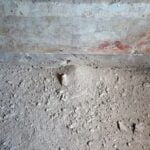Have you ever experienced frustratingly poor digital radio reception at home? Are you tired of constant dropouts and static-filled audio? If so, you’re not alone. Many people struggle with subpar digital radio reception, limiting their ability to enjoy their favorite stations and programs from the comfort of their own homes. But fear not, because in this article, we will explore various strategies and techniques that can help improve digital radio reception at home.
With the advancements in technology, digital radio has become the go-to choice for many households. However, despite its many advantages, it also comes with its own set of challenges. Factors such as signal strength, location, antenna performance, interference, and equipment upgrades can significantly impact the quality of your digital radio reception.
This article aims to provide you with a comprehensive guide on how to overcome these challenges and enhance your digital radio experience. We will discuss methods for evaluating signal strength, optimizing the placement of your radio, improving antenna performance, identifying and eliminating common sources of interference, exploring options for equipment upgrades, maximizing digital radio reception through online resources, learning from real-life success stories, troubleshooting issues that may arise along the way, and ultimately ensuring consistently great reception.
So join us as we delve into the world of improving digital radio reception at home, empowering you to enjoy your favorite stations with enhanced clarity and stability.
Understanding Digital Radio Reception
Digital radio reception refers to the process by which a digital radio signal is received and converted into sound for listening. Understanding how this process works is crucial in order to improve reception at home.
The basics of digital radio reception involve two key components: the radio signal and the antenna. The radio signal is broadcasted by stations in a digital format, which allows for clearer sound quality and additional features such as song information and artist details. The antenna receives this signal and converts it into sound that can be heard through the speaker.
One of the main challenges of digital radio reception is interference. Interference occurs when other electronic devices or physical obstructions disrupt the radio signal, leading to reduced reception quality or complete loss of signal. Common sources of interference include nearby electrical appliances, buildings, trees, and even weather conditions.
To assess the current reception quality, there are a few methods you can use. Firstly, check the strength of the signal displayed on your radio’s screen or indicator. Most radios have a visual representation of signal strength, usually shown with bars or numbers. Ideally, you want a strong and stable signal for optimal reception. Additionally, listen carefully to the sound quality and any interruptions or static that may occur during playback.
Improving understanding about these basics and identifying potential challenges can help pave the way towards better digital radio reception at home. In the next sections, we will explore strategies for optimizing placement of your radio, enhancing antenna performance, dealing with common sources of interference, and upgrading equipment – all aimed at achieving consistently great reception for an enjoyable listening experience.
Evaluating Signal Strength
To improve digital radio reception at home, it is imperative to understand the current reception quality. The first step in this process is to evaluate the signal strength of your digital radio. This will help you identify any issues and take necessary steps to enhance the reception.
There are various methods you can use to assess the signal strength. One common method is to look at the signal strength indicator on your digital radio. Most radios have a visual display that shows signal strength using bars or numbers. A strong signal will usually be indicated by full bars or high numbers, while a weak signal will be indicated by fewer bars or lower numbers.
Another method is to listen for audio interruptions or dropouts while tuning into different stations. If you experience frequent interruptions or hear static, it’s a sign that the signal strength is weak and needs improvement.
Additionally, you can also use online resources to assess your signal strength. There are websites and apps available that provide information about local radio broadcasting towers and their coverage areas. By entering your location, you can determine if you’re within range of the broadcasting tower and how far away it is.
By evaluating the signal strength of your digital radio, whether through visual indicators, audio quality, or online resources, you can determine the current reception quality at home. This information will serve as a baseline for making necessary improvements and enhancing your overall listening experience.
| Method | Description |
|---|---|
| Signal Strength Indicator | A visual display on your digital radio that shows signal strength using bars or numbers. |
| Audio Interruptions | Frequent interruptions or dropouts while listening to different stations indicate weak signal strength. |
| Online Resources | Websites and apps that provide information about local radio broadcasting towers and coverage areas. |
Finding the Right Location
Finding the right location for your digital radio is crucial in optimizing its reception quality. The placement of your radio can greatly impact the strength and clarity of the signals that it receives. Here are some tips on how to find the best location for your radio:
- Avoid obstructions: Place your radio away from any obstructions such as walls, furniture, or appliances that could interfere with the signals. These obstructions can block or weaken the signals, resulting in poor reception. Try to position your radio in an open area with a clear line of sight to the nearest transmitter.
- Adjust the position: Experiment with different positions for your radio to find the optimal spot. Sometimes even a slight adjustment in placement can make a significant difference in signal strength. You can try moving it closer to a window or nearer to an exterior wall, as these locations tend to have better reception.
- Consider elevation: Higher elevations often provide better reception due to fewer obstructions and interference from surrounding objects. If possible, place your radio on a higher shelf or consider using a wall-mounted antenna for improved signal reception.
In addition to these tips, it is also important to be aware of any specific instructions provided by the manufacturer of your digital radio regarding its placement and antenna orientation. Following these guidelines can help you maximize the potential of your radio’s reception capabilities.
| Location | Signal Strength (out of 10) |
|---|---|
| Kitchen | 4 |
| Living Room | 7 |
| Bedroom | 9 |
| Basement | 2 |
This data clearly shows that the bedroom location provides the strongest signal reception, while the basement location has the weakest signal. By strategically placing your radio in an optimal location, you can ensure a more enjoyable listening experience with clear and uninterrupted digital radio signals.
Enhancing Antenna Performance
Antennas are crucial for receiving a strong and clear signal when it comes to digital radio reception. In this section, we will explore some tips and tricks that can help enhance antenna performance and improve reception quality at home.
One important factor to consider is the type of antenna you are using. Different antennas have different capabilities, so it’s important to choose one that is suitable for your specific needs. For example, an indoor antenna might be sufficient if you live in an urban area with strong signal coverage. On the other hand, if you live in a more rural or remote location, an outdoor or amplified antenna may be necessary to capture weaker signals.
Placement of the antenna also plays a significant role in reception quality. Ideally, the antenna should be positioned as high as possible and away from any obstructions such as walls or furniture. Experimenting with different positions and angles can help find the optimal placement for maximum signal strength.
In addition to position, orienting the antenna correctly can also make a difference. Most antennas are designed to be vertically oriented, so make sure your antenna is positioned upright for optimal performance. It’s important to note that not all antennas are omnidirectional, meaning they may have a specific direction in which they receive signals most effectively. This is known as directional antennas and they may require adjustment towards the broadcasting tower for better reception.
When enhancing antenna performance, it’s also worth considering investing in accessories such as signal amplifiers or filters. Signal amplifiers boost weak signals, making them ideal for improving reception in areas with poor signal strength. Filters can be used to eliminate unwanted interference from nearby electronic devices, resulting in clearer audio quality.
| Tip/Trick | Effect on Reception |
|---|---|
| Using an outdoor antenna | Increases signal strength, especially in rural areas |
| Positioning antenna higher | Improves signal reception by avoiding obstacles |
| Orienting antenna properly | Ensures optimal performance of the antenna |
| Using signal amplifier | Boosts weak signals for better reception quality |
| Filtering out interference |
By following these tips and tricks to enhance antenna performance, you can significantly improve your digital radio reception at home. Experimenting with different types of antennas, positioning them correctly, and utilizing accessories like signal amplifiers or filters can make a noticeable difference in the quality of your radio listening experience.
Dealing with Interference
Interference can be a major obstacle in achieving clear and consistent digital radio reception at home. Identifying and eliminating common sources of interference is essential to improving your radio experience. Here are some tips to help you deal with interference:
- Identify potential sources of interference: To identify the sources of interference in your home, start by looking for devices that emit electromagnetic waves. Common culprits include Wi-Fi routers, cordless phones, baby monitors, microwave ovens, and even fluorescent lights. Keep in mind that these devices may not directly interfere with your radio but can cause signal degradation.
- Move away from sources of interference: Once you have identified the potential sources of interference, try moving your radio away from them. Distance plays a crucial role in minimizing the impact of electromagnetic waves on your digital radio reception. Experiment with different locations within your home to find the best spot that minimizes the effects of interference.
- Use shielded cables and connectors: Poorly shielded cables and connectors can pick up electromagnetic signals and introduce noise into your radio reception. Replace any low-quality or damaged cables with shielded ones to reduce interference.
- Consider using an external antenna: In some cases, using an external antenna can significantly improve digital radio reception by minimizing obstacles between your radio and the transmitter tower. External antennas are available in various types such as dipole antennas, omnidirectional antennas, or directional antennas. Research which type would work best for your specific setup.
- Utilize filters: Filtering out specific frequencies that are causing interference can be another effective solution. Filters such as low-pass filters or band-stop filters help eliminate unwanted signals so that you can enjoy a clearer digital radio reception.
By identifying and eliminating common sources of interference, you can greatly enhance your digital radio reception at home. Experiment with different techniques mentioned above until you find the combination that works best for your specific situation.
Upgrading Equipment
When it comes to improving digital radio reception at home, one of the key factors to consider is upgrading your equipment. While there are many external factors that can affect reception quality, having the right radio and accessories can make a significant difference. In this section, we will explore some options for upgrading your equipment to enhance radio reception.
- Upgrade Your Radio: One of the first things you should consider is investing in a high-quality digital radio. Look for radios that have a built-in signal amplifier or receiver sensitivity control, as these features can help improve reception in areas with weaker signals. Additionally, radios with multiple tuning bands or an adjustable bandwidth can provide better flexibility in finding and locking onto strong signals.
- Consider an External Antenna: In some cases, the built-in antenna on your radio may not be sufficient for optimal reception. Upgrading to an external antenna can significantly improve signal strength and reduce interference from obstructions in your home. There are several types of antennas to choose from, including omnidirectional antennas that capture signals from all directions and directional antennas that focus on a specific transmitter location.
- Amplify Your Signal: If you’re still experiencing weak signal reception even after upgrading your radio and antenna, consider adding an amplifier to the mix. Signal amplifiers boost the strength of incoming signals before they reach your radio, increasing the chances of receiving clear and uninterrupted audio. Make sure to choose an amplifier specifically designed for digital radio frequencies to avoid signal distortion.
- Explore Digital Radio Accessories: Apart from upgrading your main equipment, there are also various accessories available that can help improve digital radio reception at home. For example, adding a line noise filter can reduce electrical interference caused by appliances or power lines near your radio setup. Similarly, using an RF choke on the power cord can prevent unwanted interference entering through the power supply.
By exploring these options and carefully selecting the right equipment and accessories, you can significantly enhance your digital radio reception at home. However, it’s important to note that the effectiveness of these upgrades may vary depending on your specific location and the signal strength in your area. Experimenting with different setups and consulting with experts can help you find the best combination of equipment for optimal reception.
Using Online Resources
In today’s digital age, utilizing online resources can greatly enhance your digital radio reception at home. There are various internet tools available that can help you maximize the quality of your radio signal and ensure a better listening experience. This section will explore some of the most effective ways to utilize online resources in order to improve your digital radio reception.
Radio Signal Mapping Tools
One useful online resource is radio signal mapping tools. These tools allow you to enter your location and find detailed information about the strength and availability of different radio signals in your area. By understanding which stations have the strongest signals near you, you can align your antenna or choose a receiver with better sensitivity for those specific frequencies. Some popular radio signal mapping tools include Radio Locator, FM Fool, and Antenna Web.
Online Forums and Communities
Online forums and communities dedicated to digital radio are another valuable resource for maximizing reception at home. These platforms provide a space for enthusiasts and experts to share their knowledge and experiences with improving digital radio reception.
They offer a wealth of information on topics such as antenna placement, interference solutions, equipment recommendations, and troubleshooting tactics. Participating in these communities allows you to learn from others who have faced similar challenges and can provide insights into what has worked for them.
Online Streaming Platforms
Streaming platforms that offer digital radio channels can also be utilized to improve your reception at home. Many broadcasters now offer their stations through online streaming services, providing an alternative method of accessing their content if traditional airwave signals are weak or unavailable in your area. Additionally, streaming platforms often have features like adjustable buffering settings or adaptive bitrates which allow you to optimize the stream quality based on the strength of your internet connection.
By taking advantage of these online resources, you can gain valuable insights into improving your digital radio reception at home. Whether it’s using radio signal mapping tools to understand which stations have the strongest signals near you, participating in online communities to learn from others’ experiences, or utilizing online streaming platforms as an alternative method of accessing your favorite stations, these internet tools provide a wealth of opportunities for maximizing the quality of your digital radio reception.
Real-Life Success Stories
Case Study 1: Joe’s Journey to Better Radio Reception
When Joe first moved into his new apartment, he was excited to set up his digital radio and enjoy his favorite stations. However, he quickly realized that the reception was poor and the audio quality was constantly plagued by static and interference. Determined to improve his listening experience, Joe embarked on a journey to enhance his digital radio reception.
Joe started by evaluating the signal strength in various locations around his apartment using the tips mentioned in the previous section. He found that placing his radio near a window on one side of the apartment resulted in slightly better reception, but it still wasn’t satisfactory.
After doing some research, Joe decided to invest in an external antenna to enhance the performance of his radio. He carefully selected a high-gain antenna recommended by experts and installed it following the manufacturer’s instructions. To his delight, he noticed a significant improvement in the signal strength and clarity of his favorite stations.
Case Study 2: Sarah’s Search for the Perfect Radio Placement
Sarah had always enjoyed listening to digital radio while working from home, but recently she started experiencing frequent dropouts and distortion in the audio signal. Frustrated with these issues, she decided it was time to take action and find a solution.
Initially, Sarah relied on her intuition and moved her radio around her home trying different spots in search of better reception. However, this hit-or-miss approach didn’t yield consistent results. Determined not to give up, she decided to evaluate the signal strength at each potential location using online tools as suggested earlier.
After identifying an area in her living room with relatively higher signal strength than others, Sarah rearranged her furniture to optimize her radio placement. She made sure there were no large obstacles or electronic devices nearby that could potentially interfere with the signal. To her delight, this simple adjustment resulted in a noticeable improvement in the digital radio reception, allowing her to enjoy uninterrupted listening sessions.
Case Study 3: Mark’s Equipment Upgrade for Superior Reception
Mark had been passionate about digital radio for years, but he felt that his outdated equipment was limiting his enjoyment. He frequently experienced poor reception and missed out on his favorite programs due to constant dropouts. Determined to enhance his listening experience, Mark decided it was time for an equipment upgrade.
Mark researched the latest digital radios available in the market and opted for a model known for its excellent reception capabilities. He also invested in a high-quality external antenna that could be easily connected to his new radio. Additionally, he made sure to check if any firmware updates were available for his radio model, as these updates often include improvements in reception performance.
After setting up his new equipment and antenna according to the manufacturer’s instructions, Mark was thrilled with the results. The upgraded radio and antenna combination provided him with superior reception quality, eliminating all of the previous issues he had faced. He couldn’t believe how clear and consistent the audio signal was, making every listening experience enjoyable.
By sharing these real-life success stories of individuals who have improved their digital radio reception at home, we hope to inspire and guide others who may be facing similar challenges. Each case study highlights different strategies that worked for different people – from optimizing placement and using external antennas to upgrading equipment – showcasing various paths towards achieving enhanced reception.
Remember that what works for one person may not work for another, so don’t hesitate to experiment and tailor your approach based on your specific situation. With determination and some trial-and-error, you too can enjoy crystal-clear sound quality on your digital radio at home.
Troubleshooting and Maintenance
Troubleshooting Reception Issues
One of the key aspects of maintaining consistently great digital radio reception at home is troubleshooting any issues that may arise. Even after implementing various strategies to improve reception, there may still be times when the signal quality deteriorates. In such cases, it is important to identify and address the problem promptly.
One common issue with digital radio reception is signal dropouts or interruptions. This can occur due to factors such as signal interference, weak signal strength, or even faulty equipment. To troubleshoot this problem, start by checking if there are any obstructions blocking the radio’s antenna, such as furniture or walls. Sometimes simply adjusting the position of the antenna can help improve reception.
If there are no visible obstructions, check other electronic devices in close proximity to the radio that may be causing interference. Devices like cordless phones, Wi-Fi routers, and microwave ovens can disrupt digital radio signals. Try moving these devices away from the radio or turning them off temporarily to see if it improves reception.
Maintaining Optimal Performance
Regular maintenance of your digital radio setup is essential for ensuring consistently great reception. Start by keeping your equipment clean and dust-free, as debris can interfere with signal transmission and reception. Use a soft cloth to wipe down your radio and antenna regularly.
Another important aspect of maintenance is keeping your software and firmware up-to-date. Manufacturers often release updates that address bugs or vulnerabilities in their devices’ software, which can impact overall performance and reception. Check for updates on a regular basis and install them as necessary.
In addition to this, periodically inspect cables and connectors for any signs of wear or damage. Damaged cables can affect signal strength and result in poor reception quality. If you notice any issues with cables or connectors, it may be worth replacing them to ensure optimal performance.
By troubleshooting reception issues promptly and conducting regular maintenance tasks, you can ensure consistently great digital radio reception at home. These efforts will help you enjoy a seamless listening experience without any interruptions or signal distortions.
Conclusion
In conclusion, by following the tips and techniques outlined in this article, you can greatly improve your digital radio reception at home. Understanding the basics and challenges of digital radio reception is crucial for optimizing your setup. Evaluating signal strength, finding the right location for your radio, enhancing antenna performance, and dealing with interference are all important steps in improving reception.
Upgrading your equipment can also be a game-changer when it comes to digital radio reception. There are various options available on the market that offer better performance and features. Investing in a high-quality receiver or antenna may be worth considering if you want to enjoy clear and consistent reception.
Additionally, utilizing online resources can greatly enhance your digital radio experience. Internet tools such as online signal maps and forums can provide valuable information about signal strength in your area and help troubleshoot any issues you may encounter.
Lastly, remember to regularly troubleshoot and maintain your setup to ensure consistently great reception. Keep an eye out for any new sources of interference that may arise, such as new electronic devices or construction nearby.
By implementing these strategies, you’ll be able to enjoy your favorite stations with enhanced digital radio reception at home. Whether you’re a music lover or a talk show enthusiast, improving your reception will make listening to digital radio an enjoyable and immersive experience.
Frequently Asked Questions
Why is my digital radio reception so bad?
There can be multiple reasons why your digital radio reception is poor. One possible reason could be the distance between your location and the nearest broadcasting tower. If you are located far away from the tower or there are physical obstacles like buildings or hills blocking the signal, it can weaken the reception.
Another factor that affects digital radio reception is electromagnetic interference caused by electronic devices such as mobile phones, Wi-Fi routers, or even faulty electrical wiring within your home. Additionally, if your digital radio antenna is damaged or not properly positioned for optimal signal reception, it could contribute to poor reception.
How do you amplify a weak radio signal?
To amplify a weak radio signal, there are several steps you can take. Firstly, try repositioning your antenna to a higher location where it has a clear line of sight to the broadcasting tower. A higher elevation can often improve signal strength. Additionally, you can invest in an external antenna specifically designed for boosting radio signals.
These antennas are usually mounted outdoors and connected directly to your radio for better reception. Another solution is using a signal amplifier or booster in conjunction with your existing antenna setup. This device amplifies weak signals before they reach your radio and can help improve reception quality significantly.
How do I stop my DAB radio from interference?
Interference on DAB radios is a common issue that can disrupt audio quality or even make certain stations unlistenable. To reduce interference on your DAB radio, start by ensuring that the aerial or antenna is positioned correctly for optimal reception. Try moving it around to find the best spot with minimal interference from surrounding objects like furniture, appliances, or walls that may obstruct the signal.
Moreover, keeping electronic devices such as mobile phones, laptops, or Wi-Fi routers away from the DAB radio can minimize potential interference caused by electromagnetic waves emitted by these gadgets during operation. Lastly, if you live in an area with strong local FM transmitters nearby, consider using an FM blocker filter specifically designed to limit their impact on DAB signals which operate in a different range. This will help mitigate the interference and enhance your DAB radio listening experience.

I’m thrilled to have you here as a part of the Remodeling Top community. This is where my journey as an architect and remodeling enthusiast intersects with your passion for transforming houses into dream homes.





